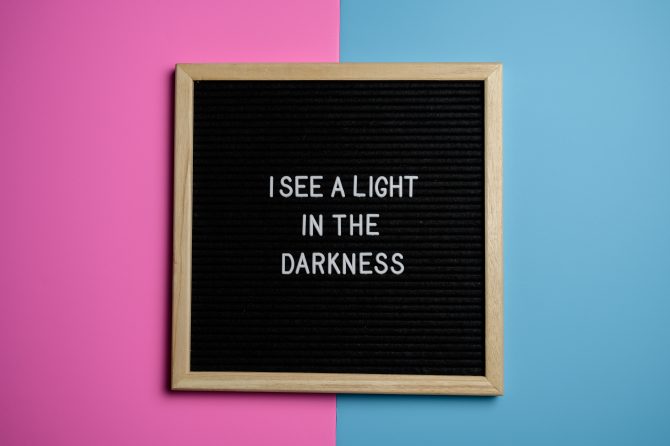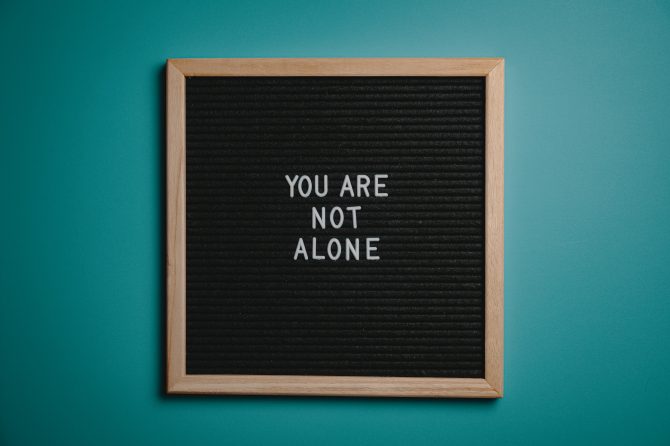February 26-March 3 is Eating Disorders Awareness Week. This week is dedicated to spreading awareness of what eating disorders are, how to spot warning signs, and how to get help. It isn’t only for people who are suffering from eating disorders. It’s also for loved ones who may not yet understand the best ways they can be supportive.
There are many common misconceptions about who develops eating disorders and why. Explore these often-overlooked aspects of the mental illness along with BPL resources to further educate you.
As a disclaimer, I am not a medical professional. This blog is for informational purposes only. It is not intended as a substitute for professional medical advice, diagnosis, or treatment. Always consult your doctor or health care provider with questions you have about eating disorders or any other medical or mental health condition.
8 Eating Disorder Facts You May Not Know
1.Eating disorders, opens a new window are a deadly mental illness, opens a new window, not a choice. Approximately one person every hour, opens a new window dies from an eating disorder. Over 28.8 million Americans, opens a new window (9% of the population) will have an eating disorder in their lifetime. Learn more about eating disorders with:
2. People of all sizes, opens a new window have eating disorders. You cannot tell if someone has an eating disorder just by looking at their body. The typical eating disorder patient in media is extremely thin or visibly underweight. In reality, you can be any size, opens a new window and suffer from an eating disorder. Many people who are not in the underweight category, opens a new window on a BMI chart exhibit other symptoms of restrictive eating disorders. Everyone deserves treatment even if they don't look "sick". Learn more about recovery with:
Life Without Ed, Tenth Anniversary Edition
Finding Your Voice Through Creativity
8 Keys to Recovery From An Eating Disorder
3. People of all genders, races, opens a new window, ethnicities, ages, opens a new window, sexual orientations, opens a new window, and socio-economic statuses have eating disorders. Eating disorders are commonly associated with young white women of a higher socio-economic status. But, that’s not the only demographic that suffers. It’s estimated that 10% of those with anorexia or bulimia and two-thirds of those with binge eating disorder are male, opens a new window. In the US, it is estimated that women of all races and ethnicities, opens a new window have similar prevalence of eating disorders as white women. Eating disorders start as young as 5, opens a new window and are seen in people over 80 years old. See eating disorders through a different perspective with:
Narrative Journeys of Young Black Women With Eating Disorders
4. Both genetics, opens a new window and environment, opens a new window determine someone's eating disorder risk. Unattainable beauty standards, trauma, activities with a high focus on appearance and weight, opens a new window (such as ballet, gymnastics and wrestling), and pressure from peers or family to lose weight are only some of the environmental risk factors. The genetic component to developing eating disorders is still being researched, opens a new window. It may help explain why some people with similar environmental factors develop eating disorders while others do not. Learn about our culture's negative impact with:
5. Dieting, opens a new window is one of the biggest risk factors for developing an eating disorder. Most people who start a diet do not develop an eating disorder. But for some, this initial food restriction and preoccupation with body size can take over their lives. Red flags, opens a new window include:
- cutting out foods for no discernable medical reason,
- obsessive talk about fat, sugar, calories, or weight,
- excessive exercise (often to compensate for eating food considered “bad”), and
- refusing to eat with other people.
If your relationship to food is interfering with your life in any way, whether psychologically or physically, opens a new window, it’s time to get professional help. Let go of dieting with:
6. Binge eating disorder is the most common eating disorder, opens a new window in the US. Binge eating is rooted in restriction, opens a new window such as skipping meals or not eating enough during the day. It has nothing to do with a lack of willpower, and dieting exacerbates the illness. Depression and anxiety often go hand-in-hand with the disorder. It can cause serious health complications, opens a new window such as diabetes, high blood pressure, gastrointestinal problems, and sleep apnea. Learn to stop the diet-binge cycle with:
Eat What You Love, Love What You Eat for Binge Eating
7. Modeling positive body image, opens a new window for children is one of the best ways to help prevent eating disorders. you can do this by avoiding making negative comments about your own body and others’ bodies. Eat in a way that doesn’t demonize certain foods such as labeling foods as good or bad. Instead, show that all foods fit into a healthy lifestyle. Encourage movement as a fun activity rather than punishment for eating too much. Teach children to be critical of media messaging, opens a new window so that they aren’t influenced by unrealistic standards of beauty and masculinity. Develop body image resilience with:
8. Approximately 50% of Americans, opens a new window know someone with an eating disorder. Treating eating disorders often requires a team. This may include a medical doctor, a therapist, and a registered dietitian who specializes in eating disorders. Family and friends are an important part of the team, opens a new window as well. If your child is struggling with an eating disorder, F.E.A.S.T, opens a new window is a supportive online community for family members. You can find more information on eating disorder advocacy organizations here, opens a new window. Learn how to be an ally with:
Loving Someone with an Eating Disorder
How to Nourish Your Child Through an Eating Disorder
Eating disorders thrive in isolation. If you are struggling with your relationship to food, you do not have to suffer through it alone. Reach out to a medical professional for help through organizations such as The Renfrew Center and the National Eating Disorders Association Help Line, opens a new window.
Remember, it is not your fault that you are suffering. Be kind to yourself and practice self-compassion. Recovery is possible.




Add a comment to: Beyond Body Positivity: Eating Disorders Awareness Week